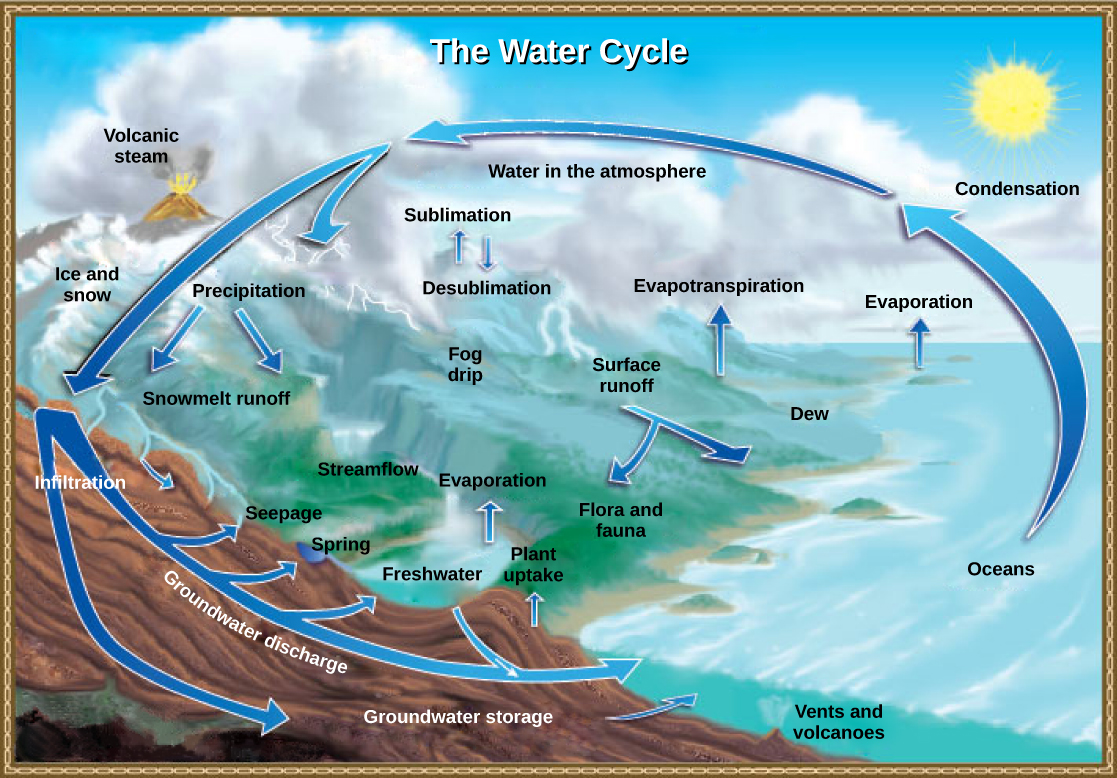Earth s water came from condensing water vapor from erupting volcanoes and asteroid impacts

Earth’s Water: Origin and Sources
Water, the essence of life, covers approximately 70% of the Earth’s surface. While this vital resource is essential for the survival of all living organisms, its origin has long been a subject of scientific inquiry. According to current research, Earth’s water primarily came from two sources: condensing water vapor from erupting volcanoes and asteroid impacts 1^.
Volcanoes: The Birthplace of Earth’s Water
Volcanoes, with their fiery eruptions and awe-inspiring lava flows, played a significant role in shaping Earth’s landscape. However, they also contribute to the creation of water on our planet. Scientists speculate that the Earth’s water supply resulted from a process called outgassing, where water vapor was released from the Earth’s molten interior during volcanic activity 1^.
During volcanic eruptions, immense amounts of water vapor, along with other gases such as carbon dioxide and sulfur dioxide, are expelled into the atmosphere. As the vapor accumulates in the atmosphere, it cools and condenses into liquid water droplets, forming clouds. Over time, these clouds release precipitation in the form of rain, replenishing the Earth’s vital water supply 1^.
Asteroid Impacts: Water Carriers from Space
Asteroid impacts have left lasting imprints on Earth’s history, shaping its geology and possibly contributing to the formation of water on our planet. Scientists believe that asteroids, large celestial bodies composed of various elements and compounds, including water, brought significant amounts of water to Earth during its early formation 1^.
As asteroids collided with the Earth, the intense heat generated from the impact would have caused the water trapped within them to be released as vapor. This vapor would have entered the Earth’s atmosphere, where it eventually condensed and formed the oceans, lakes, and rivers we see today 1^.
Today, we can still observe the remnants of ancient asteroid impacts on our planet, such as impact craters. These craters serve as evidence of the violent collisions that occurred throughout Earth’s history and contributed to the formation of our water-rich planet.
Conclusion
In conclusion, the origin of Earth’s water can be traced back to condensing water vapor from erupting volcanoes and asteroid impacts. Volcanoes provided a continuous supply of water vapor through outgassing, while asteroids delivered vast amounts of water during their collisions with Earth. Together, these two processes have shaped the abundance of water on our planet, making it the blue jewel of the solar system.
 Image 1: Illustration of erupting volcanoes releasing water vapor into the atmosphere
Image 1: Illustration of erupting volcanoes releasing water vapor into the atmosphere
 Image 2: Artistic representation of an asteroid impact releasing water vapor into the atmosphere
Image 2: Artistic representation of an asteroid impact releasing water vapor into the atmosphere
Related Posts
Quick Links
Legal Stuff

